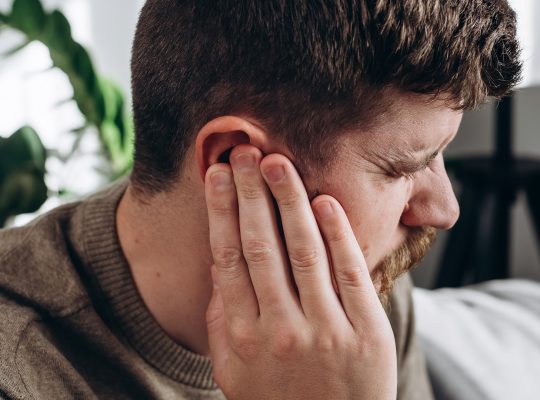Misophonia, a term that literally means “hatred of sound,” refers to a condition in which individuals experience an intense and often negative emotional reaction to specific sounds. This can range from irritation and frustration to anger and even panic. Sounds that often act as triggers are everyday sounds such as someone chewing, the tapping of a pen, the slurping of a drink or even the breathing of someone nearby. For most people, these sounds are perfectly normal and barely noticeable, but for people with misophonia, they can be overwhelming and distracting.
The Causes of Misophonia
The exact causes of misophonia are not yet fully understood, but researchers have identified several factors that may play a role. One theory suggests that the disorder stems from a combination of neurological and psychological factors. It seems that the brains of people with misophonia react differently to certain sounds. In particular, the amygdala, a part of the brain responsible for processing emotions, seems to be hyperactive in these individuals when exposed to their particular sound stimuli.
In addition, it is believed that misophonia may have a hereditary component. People with a family history of anxiety disorders or other sound-related disorders may be at increased risk of developing misophonia themselves. It may also develop after a traumatic event or a negative experience related to sound, causing the brain to develop a negative association with those specific sounds.
Symptoms of Misophonia
People suffering from misophonia often experience a range of symptoms that can vary in intensity. The most common symptoms are:
- Emotional Reactions: The most obvious symptoms are extreme irritation, anger or even panic in response to certain sounds.
- Physical Reactions: In addition to emotional reactions, people with misophonia may also experience physical symptoms such as increased heart rate, sweating, or even nausea.
- Avoidance behavior: Many people with misophonia begin to avoid situations or places where they may encounter these sounds, such as social gatherings or restaurants.
- Social Impact: The disorder can lead to stress in relationships, as friends or family members may not understand the triggers and see the reactions of the person with misophonia as exaggerated.
Diagnosis and Recognition
There is no specific test for misophonia, and the diagnosis is usually made based on the patient’s symptoms and history. This may involve the doctor asking questions about what sounds the patient experiences as disturbing and how these sounds affect their daily lives. A proper diagnosis is crucial because it can help rule out other conditions, such as tinnitus or hearing loss.
Recognition of misophonia has increased in recent years, but it remains a relatively unknown disorder. Many people feel misunderstood or isolated because they think their reactions are unreasonable. This emphasizes the importance of awareness and education about misophonia, both for those affected by it and those around them.
Treatment Options and Coping Strategies
There is currently no standard treatment for misophonia, but there are several strategies that can help manage symptoms. Some of these strategies include:
- Cognitive Behavioral Therapy (CBT): This form of therapy can help change the person’s thoughts and behaviors regarding the noise triggers. The goal is to reduce emotional reactions to these sounds.
- Sound therapy: Some people find relief through the use of background noise or white noise, which can help mask trigger sounds and take the focus off the annoying sounds.
- Mindfulness and Relaxation Techniques: Breathing exercises, meditation and other relaxation techniques can be helpful for people with misophonia to reduce stress and anxiety, especially when faced with their triggers.
- Social Support: Sharing experiences with others who have the same condition can help create a sense of community and understanding. Group support can also be valuable.
- Educating the Environment: It is important that friends, family and colleagues understand what misophonia is and how it can affect a person. This can help create a supportive environment.
Misophonia in Society
The impact of misophonia can be enormous, not only for the person suffering from it, but also for their relationships and social life. Often friends and family cannot understand why certain sounds trigger so much stress or anger, which can lead to misunderstandings and frustration. Increasing awareness of misophonia in society can help reduce stigma and promote understanding. This can also pave the way for more research and better treatment methods.
Summary
Misophonia is a complex and often misunderstood disorder that can have a significant impact on the daily lives of those affected by it. It is crucial to take the symptoms and consequences of misophonia seriously and to understand that the reactions to certain sounds are real and valid. While there is currently no cure-all solution, there are several strategies and therapies available that can help manage symptoms. Increasing awareness of misophonia and providing support to those who struggle with it is an important step toward creating a more understanding and empathetic society.







